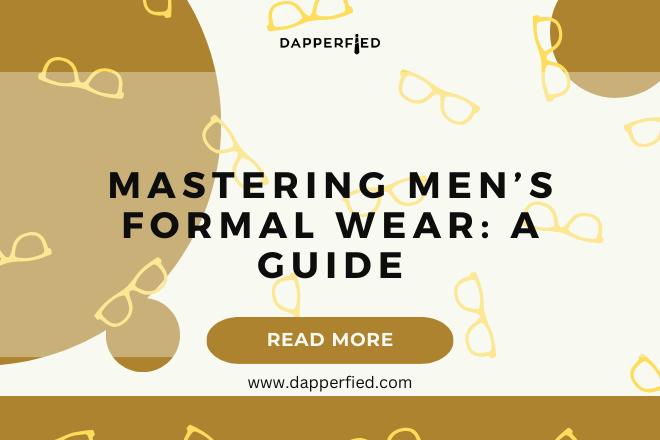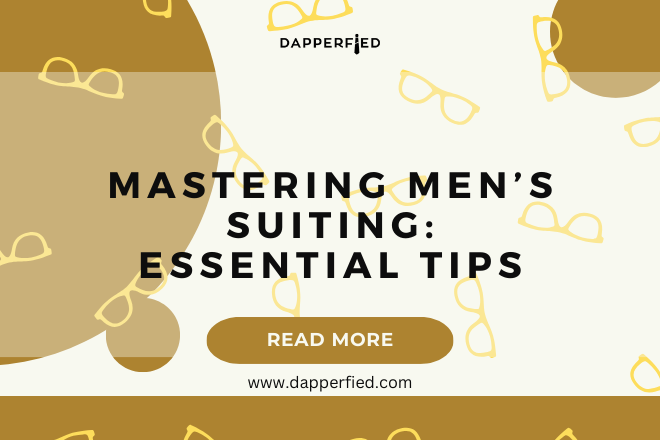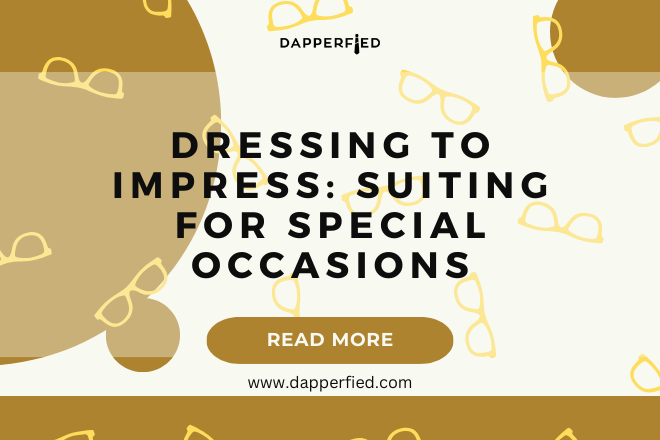
Men's Style
Dress to Impress: Tailored Suiting Tips
Tailored suiting has a rich history that dates back centuries. The art of tailoring can be traced back to ancient civilizations such as Egypt and Rome, where garments were meticulously crafted to fit the wearer’s body. In the modern era, tailored suits have become a symbol of sophistication and elegance.
A well-fitted suit is essential for any man’s wardrobe. It not only enhances your appearance but also boosts your confidence. A suit that fits perfectly can make you feel like a million dollars and leave a lasting impression on others. Whether it’s for a job interview, a wedding, or a formal event, investing in a tailored suit is always a wise decision.
There are several benefits to investing in a tailored suit. Firstly, it allows you to have complete control over the fit and style of your suit. A tailor will take precise measurements of your body and create a suit that is specifically tailored to your unique shape and proportions. This ensures that the suit fits you like a second skin, highlighting your best features and minimizing any imperfections.
Key Takeaways
- Tailored suiting offers a personalized fit and style for men.
- When selecting a suit, consider the occasion, fit, color, and fabric.
- Men’s suiting styles range from classic to contemporary, with options for every taste.
- Achieving the perfect fit requires attention to measurements, alterations, and details like sleeve length and trouser break.
- To maintain your tailored suit, store it properly, avoid common mistakes like over-tailoring, and follow care instructions for the fabric.
Suit Selection Tips for Men
When selecting a suit, there are several factors to consider. Understanding the occasion and dress code is crucial in order to choose the appropriate suit. For formal events such as weddings or black-tie affairs, a classic black or navy suit is usually the best choice. For more casual occasions, you can opt for lighter colors or patterns.
The fabric and color of the suit are also important considerations. Wool is the most common fabric used for suits due to its durability and versatility. However, there are other options such as cotton or linen for warmer climates. When it comes to color, navy and charcoal gray are timeless choices that can be worn for any occasion. If you want to make a statement, you can experiment with bolder colors or patterns.
The fit and style of the suit are perhaps the most important factors to consider. The fit should be tailored to your body shape, with the jacket hugging your shoulders and the trousers falling straight from the waist. The style of the suit can vary depending on your personal preference and body type. Classic styles such as single-breasted or double-breasted suits are always a safe choice, while contemporary styles like slim-fit or three-piece suits offer a more modern and fashion-forward look.
Men’s Suiting Styles: From Classic to Contemporary
Classic suit styles have stood the test of time and are still popular today. Single-breasted suits are the most common style, featuring a single row of buttons down the front. They are versatile and can be worn for both formal and casual occasions. Double-breasted suits, on the other hand, have two rows of buttons and are known for their formal and sophisticated look.
Contemporary suit styles have gained popularity in recent years, offering a more fitted and streamlined silhouette. Slim-fit suits are designed to hug the body closely, creating a sleek and modern look. Three-piece suits, which include a vest in addition to the jacket and trousers, add an extra layer of sophistication and can be worn for formal events.
When choosing a suit style, it’s important to consider your body type and personal style. If you have a slim build, slim-fit suits can enhance your physique. On the other hand, if you have a larger build, classic styles like single-breasted suits can provide a more flattering fit. It’s also important to choose a style that aligns with your personal style and the image you want to project.
The Tailored Suit Guide: How to Achieve the Perfect Fit
| Metrics | Values |
|---|---|
| Number of pages | 25 |
| Number of chapters | 5 |
| Number of illustrations | 15 |
| Number of steps to achieve the perfect fit | 10 |
| Number of recommended fabrics | 8 |
| Number of recommended tailors | 5 |
| Number of recommended accessories | 3 |
| Number of customer reviews | 20 |
| Average rating | 4.5 stars |
Achieving the perfect fit is crucial when it comes to tailored suiting. Proper measurements are essential in order to create a suit that fits you like a glove. A tailor will take precise measurements of your chest, waist, hips, shoulders, and inseam to ensure that every aspect of the suit is tailored to your body.
Understanding the different parts of a suit and how they should fit is also important. The jacket should fit snugly around the shoulders, with the sleeves ending at the base of your thumb. The trousers should sit comfortably at your waist, with a slight break at the top of your shoes. The length of the trousers can be adjusted based on your personal preference.
Working with a tailor is key to achieving the perfect fit. A skilled tailor will not only take accurate measurements but also make adjustments throughout the fitting process to ensure that the suit fits you perfectly. They will also provide guidance on the best style and fabric choices based on your body type and personal style.
Suit Buying Tips: What to Look for When Purchasing a Suit
When purchasing a suit, it’s important to find the right balance between quality and price. While it’s tempting to opt for a cheaper suit, investing in a high-quality suit will pay off in the long run. A well-made suit will last for years and maintain its shape and appearance, while a cheaply made suit will quickly lose its structure and show signs of wear.
When examining a suit, pay attention to details such as buttons, stitching, and lining. High-quality suits will have sturdy buttons that are securely attached, clean and even stitching, and a well-constructed lining. These details are indicators of a well-made suit that will stand the test of time.
Deciding whether to shop for a suit online or in-store is a personal preference. Online shopping offers convenience and a wider range of options, but it can be difficult to gauge the fit and quality of the suit without trying it on. In-store shopping allows you to try on different suits and receive personalized assistance from sales associates or tailors.

Men’s Formal Wear: Dressing for Special Occasions

Formal occasions require special attention when it comes to dressing. Understanding the different dress codes is essential in order to choose the appropriate formal wear. Black tie events typically require a tuxedo, while white tie events call for a tailcoat and formal accessories.
When choosing formal wear, it’s important to select high-quality garments that fit you perfectly. A well-fitted tuxedo or tailcoat will make you look and feel like a true gentleman. Pay attention to details such as lapel style, fabric, and accessories to ensure that your formal wear is appropriate for the occasion.
Accessorizing your formal wear is key to achieving a polished and sophisticated look. A classic black bow tie is a staple for black tie events, while a white bow tie is required for white tie events. Pocket squares, cufflinks, and dress shoes are other accessories that can elevate your formal wear and add a touch of personal style.
How to Accessorize Your Tailored Suit
Accessorizing your tailored suit is an opportunity to showcase your personal style and attention to detail. The right accessories can elevate your look and make a statement without overpowering your suit.
Choosing the right tie is crucial when accessorizing a suit. A classic silk tie in a solid color or subtle pattern is always a safe choice. However, you can also experiment with different textures or bold colors to add personality to your outfit. The width of the tie should be proportionate to the width of your lapels.
Pocket squares are another accessory that can add flair to your suit. They can be folded in various ways and should complement the color or pattern of your tie without matching it exactly. Experiment with different folds and fabrics to find the style that suits you best.
Shoes are an important accessory that should not be overlooked. A well-polished pair of dress shoes can complete your look and add a touch of sophistication. Choose shoes that are appropriate for the occasion and complement the color of your suit.
The Importance of Fabric in Tailored Suiting
The fabric of a suit plays a significant role in its overall appearance and comfort. There are several different fabrics to choose from, each with its own benefits and drawbacks.
Wool is the most common fabric used for suits due to its durability, breathability, and versatility. It is available in various weights and can be worn year-round. Wool suits are known for their ability to drape well and maintain their shape.

Cotton suits are a popular choice for warmer climates or casual occasions. They are lightweight and breathable, making them comfortable to wear in hot weather. However, cotton suits tend to wrinkle more easily than wool suits.
Linen suits are another option for warm weather. Linen is a lightweight and breathable fabric that is perfect for summer events. However, linen suits tend to wrinkle easily and may require more maintenance.
When choosing a fabric, consider the occasion and season. Wool suits are suitable for year-round wear, while cotton or linen suits are better suited for warmer weather. It’s also important to consider the care instructions for each fabric, as some may require more maintenance than others.
Common Tailoring Mistakes to Avoid
When it comes to tailored suiting, there are several common mistakes that men often make. One of the biggest mistakes is overlooking the importance of proper fit. Ill-fitting suits can make you look sloppy and unprofessional, so it’s important to invest in a suit that fits you perfectly.
Choosing the wrong style for your body type is another common mistake. Not all suit styles are flattering on every body type, so it’s important to choose a style that enhances your physique. For example, slim-fit suits may not be the best choice for men with larger builds.
Neglecting to consider the occasion and dress code is another mistake that many men make. Wearing an inappropriate suit for a formal event can make you stand out for all the wrong reasons. It’s important to understand the dress code and choose a suit that is appropriate for the occasion.
Maintaining Your Tailored Suit: Tips for Longevity and Care
Proper maintenance and care are essential in order to prolong the life of your tailored suit. Proper storage is key to preventing wrinkles and maintaining the shape of the suit. Hang your suit on a sturdy wooden hanger to help it retain its shape and avoid creases.
Regular cleaning is also important to keep your suit looking its best. However, dry cleaning should be done sparingly, as it can cause the fabric to lose its luster and shape over time. Instead, spot clean any stains and air out your suit after each wear to keep it fresh.
Knowing when to replace or repair your suit is also important. Over time, suits may show signs of wear and tear, such as frayed seams or worn-out buttons. It’s important to address these issues promptly to prevent further damage. A skilled tailor can make repairs or alterations to extend the life of your suit.
In conclusion, investing in a tailored suit is a wise decision that can enhance your appearance and boost your confidence. By understanding the occasion and dress code, choosing the right fabric and color, considering the fit and style, and working with a skilled tailor, you can achieve the perfect fit and look your best in any situation. With proper care and maintenance, your tailored suit will last for years and continue to make a lasting impression. So why wait? Invest in a tailored suit today and experience the difference for yourself.
If you’re looking for some tailored suiting advice, you might want to check out this article on Dapperfied.com. They have a great piece on how to rock a men’s burgundy suit, offering tips on styling and accessorizing to create a sophisticated and stylish look. Whether you’re attending a formal event or just want to stand out from the crowd, this article will provide you with all the guidance you need. So, why not head over to Dapperfied.com and get inspired by their expert advice?
FAQs
What is tailored suiting?
Tailored suiting refers to the process of creating a custom-made suit that is specifically designed to fit an individual’s body shape and measurements.
Why is tailored suiting important?
Tailored suiting is important because it ensures that the suit fits the individual perfectly, providing both comfort and style. It also allows for customization of the suit’s design and fabric, making it unique to the individual.
What is the process of getting a tailored suit?
The process of getting a tailored suit typically involves taking measurements of the individual’s body, selecting a fabric and design, and then creating a pattern and cutting the fabric to fit the individual’s measurements. The suit is then sewn together and fitted to the individual for any necessary adjustments.
How long does it take to get a tailored suit?
The length of time it takes to get a tailored suit can vary depending on the tailor and the complexity of the design. Generally, it can take anywhere from a few weeks to a few months to complete the process.
What should I look for in a tailor?
When looking for a tailor, it is important to consider their experience, reputation, and the quality of their work. It is also helpful to read reviews and ask for recommendations from friends or family members who have had experience with tailors.
How much does a tailored suit cost?
The cost of a tailored suit can vary depending on the tailor, the fabric, and the complexity of the design. Generally, a tailored suit can cost anywhere from a few hundred to several thousand dollars.


















